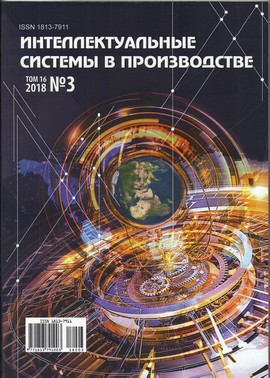СРАВНЕНИЕ ВЛИЯНИЯ ДЕЙСТВИЯ НАНОКАРБОНАТА КАЛЬЦИЯ И НАНОКАОЛИНА НА СВОЙСТВА ЖЕЛЕЗОБЕТОНА
DOI:
https://doi.org/10.22213/2410-9304-2018-3-147-159Ключевые слова:
нанокарбонат кальция, нанокаолин, наноматериалыАннотация
Данное исследование было проведено с целью установления влияния действия некоторых наноматериалов на свойства бетона, экспериментальная часть включала использование наночастиц карбоната кальция (CaCO3) и нанокаолина (К) в различных концентрациях. Нанокарбонат кальция вводили в состав в концентрации 1, 2, 3, 4 и 5 %, частично заменяя цемент. Количество нанокаолина составляло 5, 6, 7, 8, 9, 10 %. Результаты экспериментального исследования показали, что при введении этих материалов подвижность бетонной смеси значительно не снижалась, а прочность на сжатие на ранних сроках при определенных концентрациях повышалась. Оптимальное содержание нанокарбоната кальция и нанокаолина составило 1 и 7 % соответственно. Была выявлена прямая зависимость между результатами микроанализа материалов и их испытаниями на прочность.Библиографические ссылки
A. Hakamy, F.U.A. Shaikh, and I.M. Low. (2014), “Characteristics of Hemp Fabric Reinforced Nanoclay-Cement Nanocomposites”, Cement & Concrete Composites, 50 (2014), pp. 27-35.
Aiswarya.S, P. Arulraj, and A. Narendran, (2013). “Experimental Investigation on Concrete Containing Nano-Metakaolin”, Engineering Science and Technology: An International Journal (ESTIJ), February 2013, ISSN: 2250-3498, Vol.3, No.1.
S.I. Zaki, and I. Sobhy, (2012). “The Use of Activated Nano Clay to Develop the Compressive Strength and Microstructure of High Performance Concrete”, CTU Conference, Concrete in the Low Carbon Era, the University of Dundee, UK, pp. 9-11.
K. Patel. (2013). “The Use of Nanoclay as a Constructional Material”, Department Of Civil Engineering, L.D. College of Engineering Ahmedabad- Gujarat, India. International Journal of Engineering Research and Applications, Vol. 2, Issue 4, July-August 2012, pp. 1382-1386.
Yamei. C., et al, (2016). “Effects of Nano-CaCO3 on the Properties of Cement Paste: Hardening Process and Shrinkage at different Humidity Levels”, 5th Conference: International Conference on the Durability of Concrete Structures, Shenzhen University, Shenzhen, Guangdong Province, P.R. China.
S. Monkman et al, (2015). “The Effect of In-Situ Development of Nano-Calcium Carbonate on Industrial Concrete”, University of British Columbia, Department of Earth, Ocean and Atmospheric Sciences.
Wei Li., et al., (2015). “Study on the status and Development Prospect of the Nano-Concrete”, 3rd International Conference on Mechatronics, Robotics and Automation (ICMRA 2015), Shenyang University
M. Z. Huang, T. Meng, Q. L. Xu, M.H. Wang., (2013).“Influence of nano-CaCO3on compressive strength and microstructure of high strength concrete with hardening accelerator under different curing temperature”, CONSEC13-Seventh International Conference on Concrete under Severe Conditions - Environment and Loading, 23-25 September 2013, Nanjing, China.
Egyptian Standard Specification, (2006). “Composition, specifications and conformity criteria for common cements”, Part 1, ES, 4756-1.
Egyptian Code for Design and Execution for Concrete Structures, (2007).ECP, No, 203; 2007.
ASTM C494/C494M, (2015). “Standard Specification for Chemical Admixtures for Concrete”, ASTM International, West Conshohocken, PA, 2015, www. astm.org
Master Builder Solutions from BASF, (2007). “MasterGlenium: High-range, water-reducing concrete superplasticizers”. [Available at www. master-builders-solutions.europe.basf.com/en-/products/masterglenium] (Accessed 22 January 2016).
Myers R (2007), “Calcium carbonate, 100 most important chemical compounds: a reference guide”. Greenwood Press, Westport, pp. 59-61.
Kalkali G., et.al. (2000). ''Hydration products of C3A, C3S and Portland cement in the presence of CaCO3. Cement and Concrete Research 30(7) pp. 1073-1077.
MeyerC (2009).“The greening of the concrete industry. Cement Concrete Composites” 31(8): pp. 601-605.
Azhar, M., & Qureshi, M. M. A. (2013). “Strength development in concrete by incorporating metakaoline”. International Journal of Advanced Trends in Computer Science and Engineering, 2(1), pp. 634-639.
Srivastava, V., Kumar, R.,&Agrwal, V. C. (2012).Metakaoline inclusion: “Effect on mechanical properties of concrete.” J. Acad. Indus. Res. 1(5), pp. 251-253.
ASTM C1240 / C1240M-15, Standard Specification for Silica Fume Used in Cementitious Mixtures, https://www.astm.org/Standards/C1240.htm
Egyptian Standard Specification, “Composition, specifications and conformity criteria for common cements”, Part 1, ES, 4756-1.
BS 5328, (1981). “Methods of Specifying Concrete including Ready- mixed Concrete”.
ASTMC 1611, (2008). “Standard Test Method for Slump Flow of Self-Consolidating Concrete”, WSDOT Materials Manual M 46-01.27.
German Standards DIN-1048, “Water Permeability”, www. scribd.com.
BS EN 12390-3:2009, (2009). “Testing hardened concrete Part 3: Compressive strength”.
ASTM C 496/C 496M-04, (2004). “Standard Testing concrete, part 117: Method for determination of tensile splitting strength''.
P.J.M. Monterio, A.P. Kirchheim, S. Chae, P. Fischer, A.A. MacDowell, E. Schaible and H.R. Wenk, (2009). “Characterizing the nano and micro structure of concrete to improve its durability”.Cement& Concrete Compo sites. 31 pp. 577-584.
H.Li, H. Xiao, J. Yuan and J. Ou, (2004). “Microstructure of cement mortar with nano-particles”, Composites : Part B. 35 pp. 185-189.
Bonavetti V, Donnza H, Menendez G, Cabrera O and Irassar EF (2003). “Limstone filler cement in low w/c concrete: A rational use of energy”, Cement and Concrete Research 33(6) pp. 865-871.
Opoczky L., (1992). “Progress of the particle size distribution during the integrating of a clinker-Limestone mixture”. Zement-Kalk-Gips 45(12):648-651.
Li GuHua, Gao Bo., (2006).“The Impact of Nanometer Powders Si02and CaC03 on the Performance of Concrete”. [J]. Railway Society, 2006.28 (a).
S.I.Zaki, “Assessment of the Durability of Nano Silica/ Fly Ash Cement Pastes Exposed to Normal and Aggressive Curing Conditions” Seventh International Conference on Nanotechnology in construction (NTC 2015), Sharm El- Sheikh, Egypt, March 2015.
S.I.Zaki, K.S. Ragab and A.M. Rashad, (2010). “The Use of Nano SiO2 to Develop the water Permeability and Microsturcutre of High performance Concrete”.International conference on Nano Technology for Green and Sustainable Construction 14- 17, Cairo, Egypt, March 2010.
S.I.Zaki, Kh.Ragab (2009). “How Nano Technology Can Change Concrete Indusry”. 1st internantional conference on Sustainable Biult Envionment Infrasturctures in Deveoping Conuntries, ISSN 2170 - 0095, Oran, Algeria, 12-14 October 2009, vol. 1 , pp (407- 414).
S.I.Zaki, Hossam A. Hodhod, Mostafa A. Mahdi (2016), “The Effect of Using Hybrid Nano Materials on Drying Shrinkage and Strength of Cement Pastes”.8th International Conference on Nano Technology in Construction, Sharm El-Sheikh, Egypt.
S.I.Zaki, Hossam A. Hodhod,Youssef A. Mosleh, (2017). ''Assessing the Durability of Blended Concrete with Some Nanomaterials”.9th International Conference on Nano Technology in Construction, 17-21 March 2017, Sharm El-Sheikh, Egypt.
S.I.Zaki, Khaled. S. Ragaband Alaa. M. Rashad, (2011). “The use of nano-composites to develop the microstructure and impermeability of High Performance Concrete”, ICCE- 19 Conf., Shanghai, China, July 24-30.


